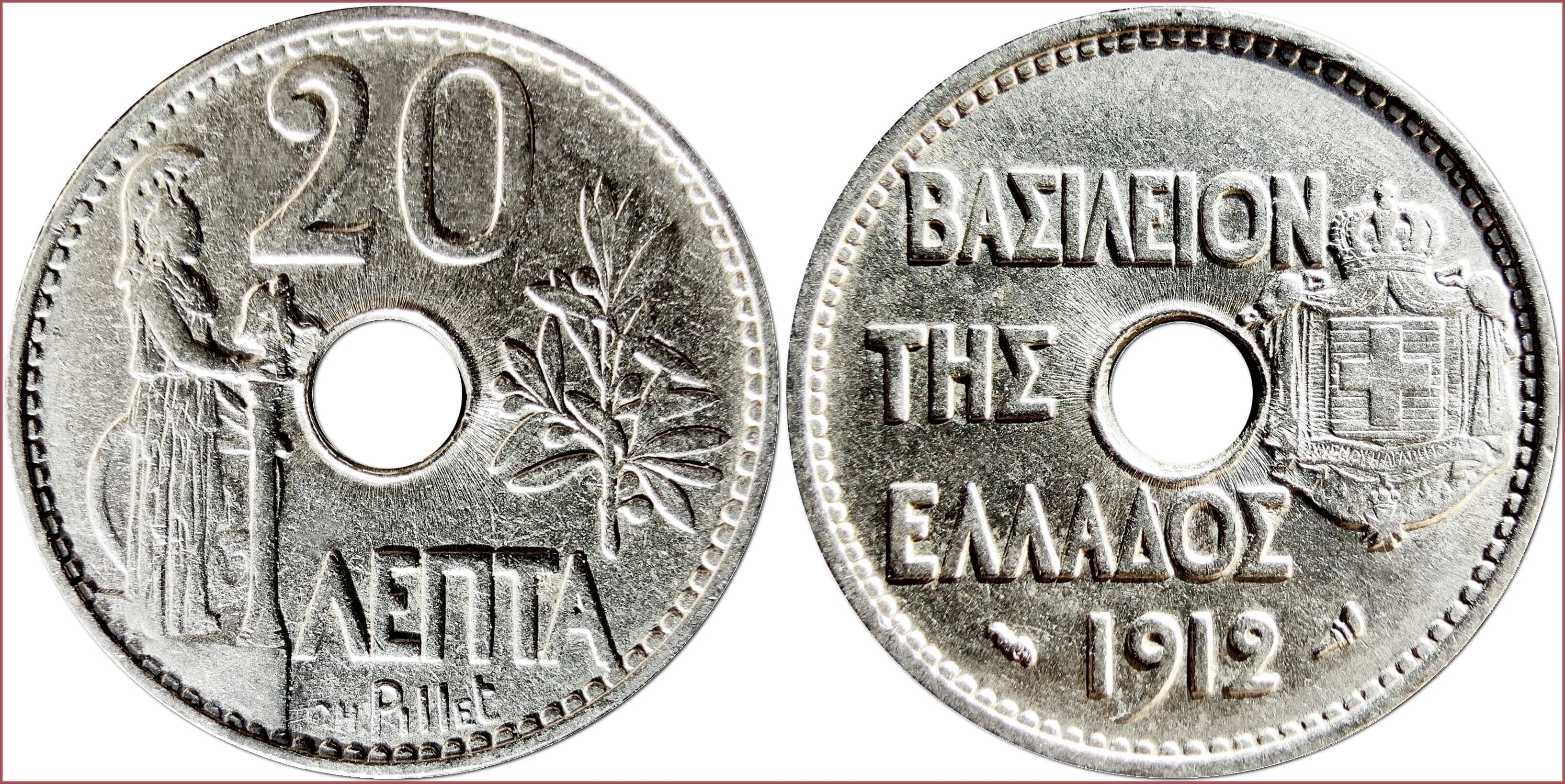LEPTON: COIN OF GREECE
20 lepta, 1912: Kingdom of Greece
Ruler: George I (George I of Greece) — King of Greece (1863-1913).
Hole in the center of the coin.
20 ΛΕΠΤΑ: 20 lepta.
ch. Pillet (micro inscription under the denomination): French sculptor and engraver Charles Pillet.
Athena (an ancient Greek goddess associated with wisdom, handicraft, and warfare) in a helmet and with a shield; an olive branch. — The coin depicts Athena Parthenos: a monumental chryselephantine sculpture of the goddess Athena by Phidias. Not preserved to this day, the best-preserved of all ancient copies is the Roman marble Varvakeion Athena, which is exhibited in the National Archaeological Museum of Athens.
ΒΑΣΙΛΕΙΟΝ ΤΗΣ ΕΛΛΑΔΟΣ: Kingdom of Greece.
A variation on the Greater coats of arms theme Kingdom of Greece (without shield holders). The inscription on the ribbon below: "ΙΣΧΥΣ ΜΟΥ Η ΑΓΑΠΗ ΤΟΥ ΛΑΟΥ" (THE LOVE OF THE PEOPLE, MY STRENGTH — the official motto of the House of Glücksburg /a branch of the Oldenburg dynasty/, from which the King George I came).
Cornucopia and torch as marks of the Paris Mint and its chief engraver.
Paris Mint (Monnaie de Paris, France).
Mintage: 10.145.000.
- Nickel: 23 mm - 5 g
- Reference price: 3$
COIN LEPTON — WHERE & WHEN (coins catalog: by names & emitents)
- GREECE, Kingdom + Republic (1828-1986): lepton = 1/100 phoenix (1828-1831); lepton = 1/100 drachma (1832-1986)
- CRETAN STATE (1900-1901): lepton = 1/100 drachma
- UNITED STATES OF THE IONIAN ISLANDS, a Greek state and amical protectorate of the United Kingdom (1819-1862): lepton = 1/4 obol
About the name of the coin lepton (plural: lepta): literally translated, the word "lepton" (Greek: "λεπτόν") means "small", "thin". On a historical scale, the lepton as a small coin has existed since ancient times. As a rule, the smallest coins of Ancient Greece informally had this name (however, interestingly, it is not possible to find ancient coins with such a denomination in serious numismatic catalogs).
By the way, the lepton is one of the few coins mentioned in the Bible. In particular, we are talking about the so-called "Lesson of the widow's mite"... but with a little clarification. The term "mite" actually meant the lepton coin in the mentioned context. And that's why...
In Bible times the smallest coin was called a lepton; there was no coin called by the English term "mite" at that time. However, there was a mite (the smallest coin too) at the time of the creation of the King James Bible and at the time of the earliest modern English translation of the New Testament. The denomination as mijt (in English — "mite") was well known in the Southern Netherlands (Brabant and Flanders). The translators decided to change the name of the coin from the incomprehensible "lepton" to the more familiar "mite" for the convenience of readers.











